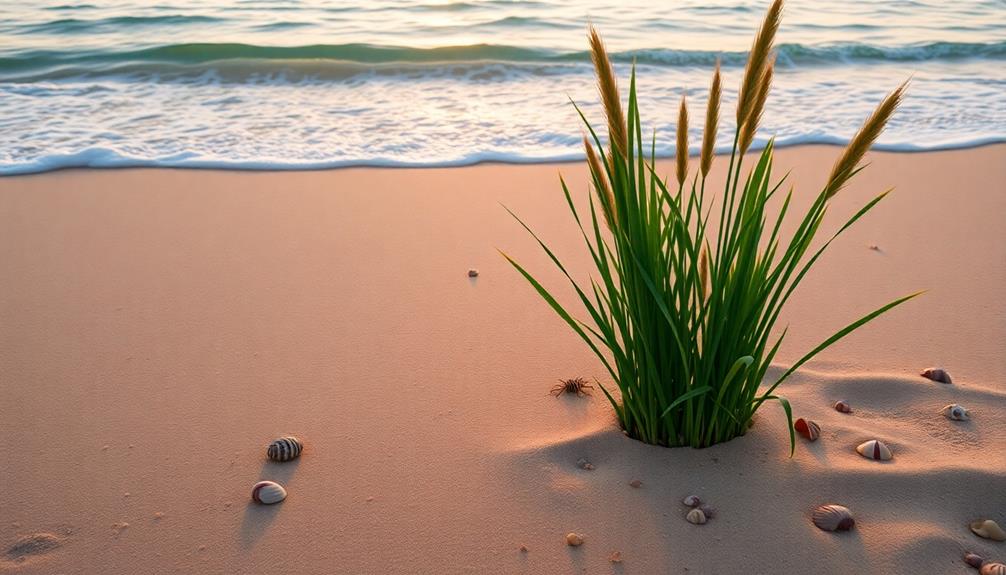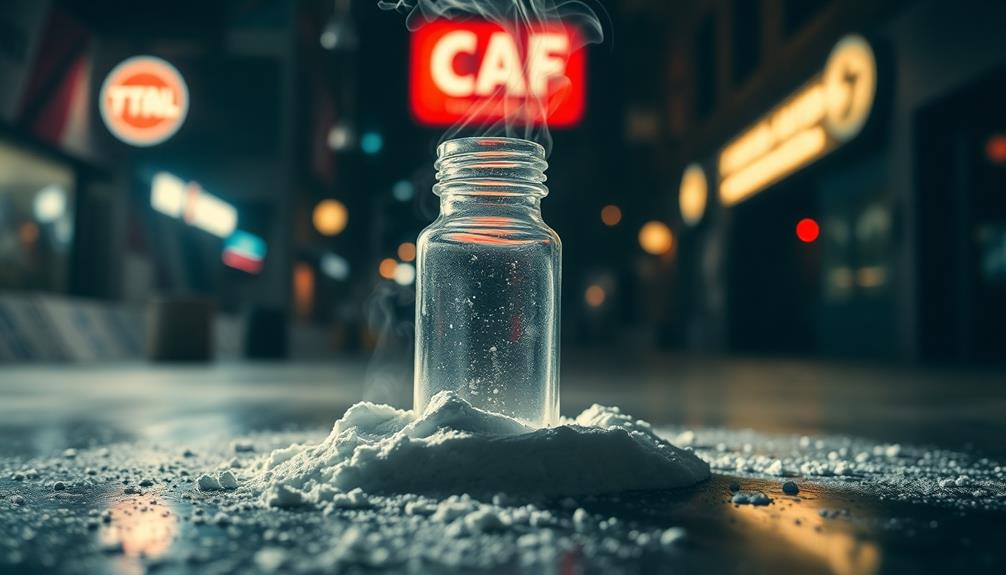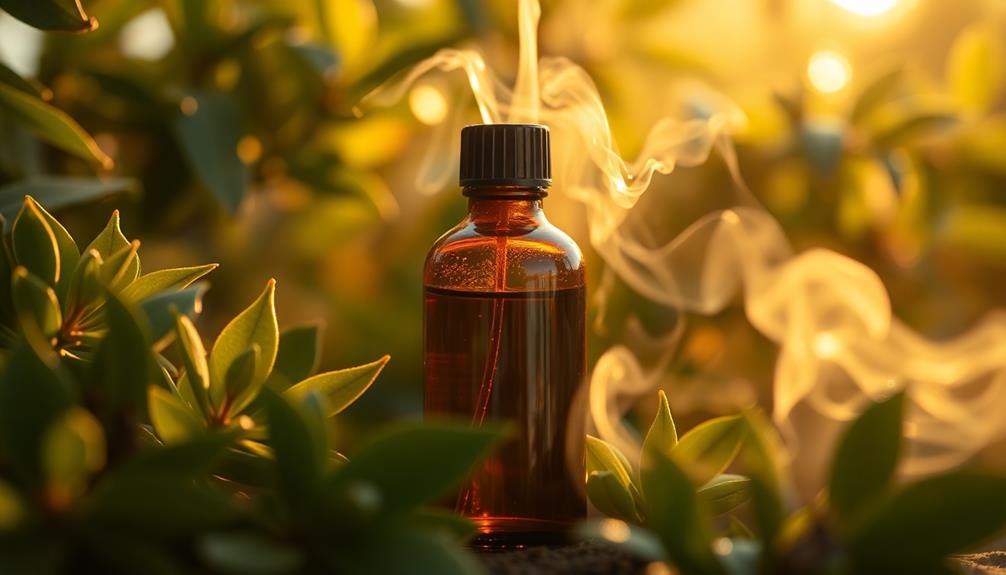The beach smells like an exciting mix of salty sea air, earthy seaweed, and warm sand. When you breathe in, you might notice the sharpness of iodine and the unique, pungent aroma from marine life. Factors like the ocean region and time of day can change what you smell. For example, the Atlantic has a brinier scent, while the Caribbean may feel sweeter and lighter. These scents can remind you of fun summer days and loved ones. Every visit may bring a different fragrance, connecting you to special memories and experiences. There's so much more about beach scents to explore!
Key Takeaways
- The beach smells of salty sea air, often combined with earthy aromas from sand and decaying marine life.
- Dimethyl sulfide (DMS) contributes a pungent, unique scent characteristic of vibrant ocean ecosystems.
- Different regions produce distinct scents, such as the briny Atlantic or the sweeter Caribbean aromas.
- Scents found at the beach evoke nostalgia, reminding visitors of summer adventures and family memories.
- Environmental factors like temperature, time of day, and local flora significantly influence beach aromas.
Introduction
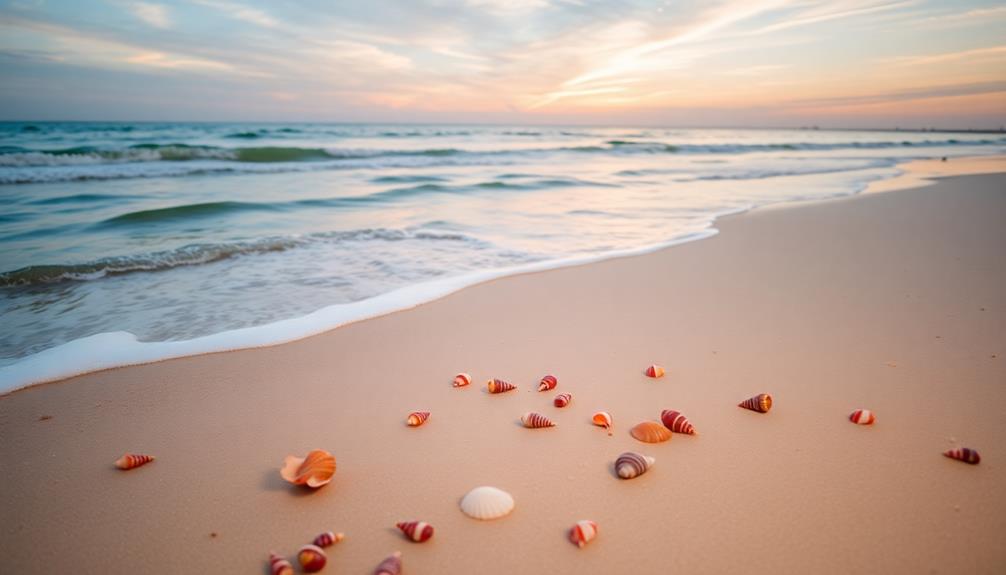
When you step onto the sandy shores of a beach, you're often greeted by a rich tapestry of scents that dance in the salty air. Those unique aromas come from many sources, creating the unmistakable smell of the sea. One key player in this scent is dimethyl sulfide, or DMS, which gives off a salty, pungent odor. This compound originates from marine algae and phytoplankton, contributing to the overall beach experience.
As you walk along the shore, you may notice the distinct smells that emerge during low tide. Decomposing seaweed and shellfish release their own powerful scents, adding layers to the beach's fragrance.
Different ocean regions also have their signature scents. For instance, the Atlantic Ocean is known for its briny aroma, while the Pacific can have a hint of petroleum.
These scents can trigger wonderful memories of summer adventures, local seafood, and family picnics. Each visit to the beach can feel like a journey through time, reminding you of laughter and sunny days spent by the waves.
Description of the Smell
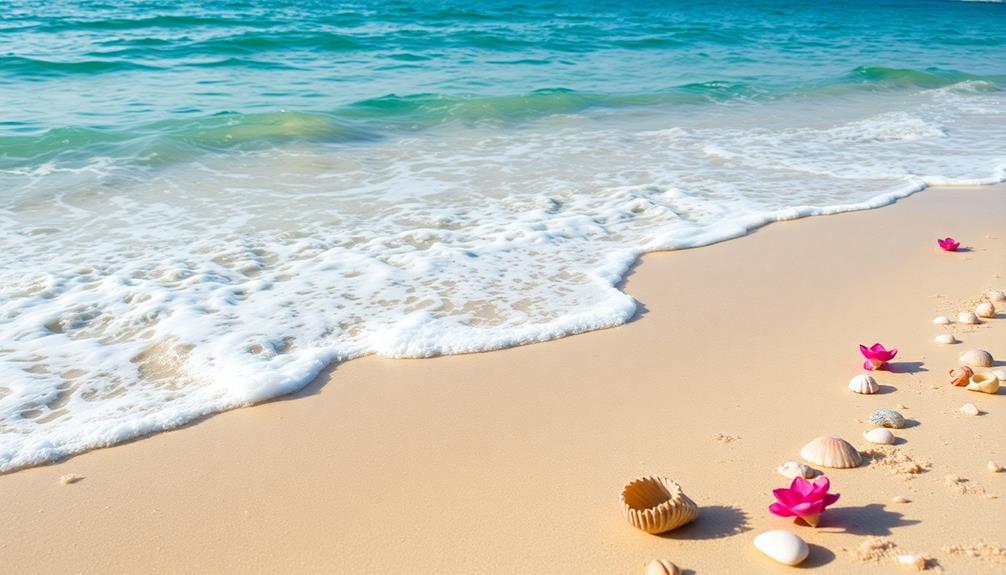
The smell of the beach envelops you in a refreshing embrace, blending the sharpness of iodine with the briny scent of salt and the earthy aroma of seaweed. As you stroll along the shore, you might catch a whiff of dimethyl sulfide, a compound released by marine algae and phytoplankton. This adds a unique, pungent twist to the smell of the seaside, reminding you just how alive the ocean truly is.
Each beach has its own scent story to tell. For example, the Pacific Ocean often smells salty with a hint of petroleum, while the Caribbean offers a lighter, sweeter aroma that dances in the air.
When the tide goes out, the aroma shifts again. You may notice the distinct scents of decaying seaweed and shellfish, bringing a whole new layer of complexity to the beach's fragrance.
Environmental factors play a big role too. Water temperature, local plants, and even organic materials influence what you smell. Additionally, the wind can carry particles from various sources such as soil, pollen, or even industrial pollutants, all of which contribute to the mix of scents in the air. This is also why dust has a distinct smell, often noticeable after a long dry period or when it’s disturbed in the home. The composition of dust, a blend of organic and inorganic materials, interacts with moisture and heat, releasing specific compounds that trigger your sense of smell.
Source and Composition
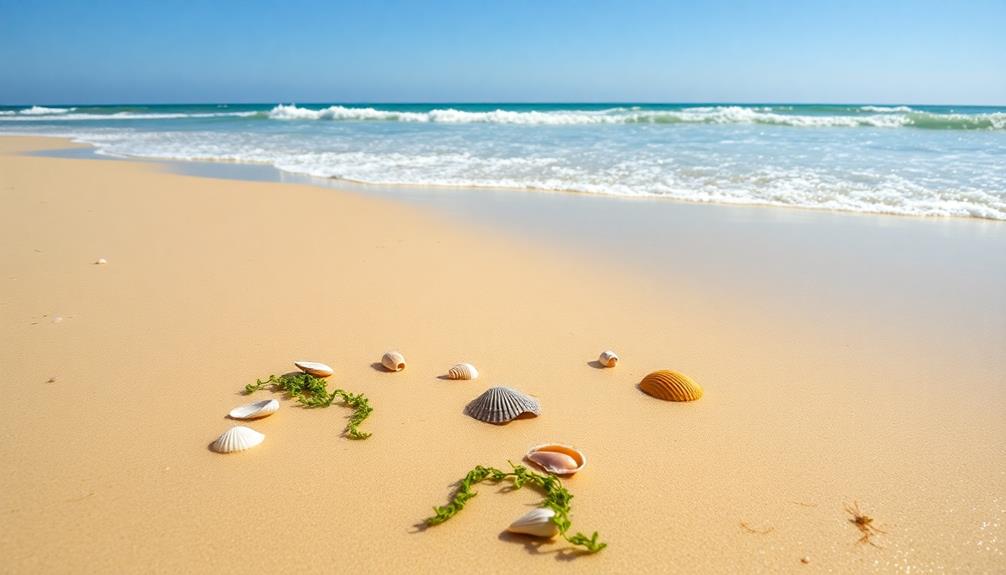
As you take in the unique scents of the beach, it's fascinating to consider their sources and composition. One of the main contributors to that beach smell is dimethyl sulfide (DMS), which gives off a salty and pungent odor. This compound is produced by marine algae and phytoplankton.
When you breathe in the sea air, you're getting a mix of these aromas, making the experience truly special.
Bromophenols released from algae add a fishy and iodine-like scent that many associate with coastal areas. The complexity of beach smells also comes from different types of seaweed, decaying organic materials, and the ocean's water chemistry, including elements like sodium and chlorine.
When the tide goes out, you might notice distinct odors from decaying seaweed and shellfish, creating a unique smell specific to each beach.
Lastly, regional differences play a big role too. For instance, the Atlantic Ocean usually has a stronger briny aroma compared to the lighter, sweeter notes found in Caribbean waters.
Each beach offers a special blend of scents, waiting for you to explore!
Typical Scenarios or Environments
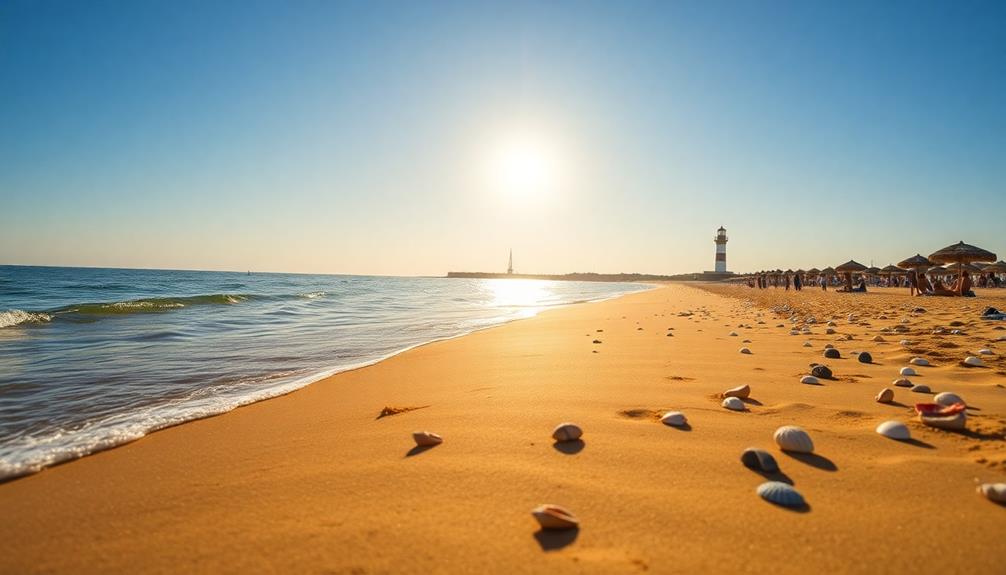
Picture yourself strolling along the shoreline, where the air is rich with the unmistakable scents of the beach. You might notice the strong smell of salt in the air, a reminder of the vast sea nearby. As you walk, low tide reveals the unique aromas of decomposing seaweed and shellfish. Each step brings a different scent, depending on the time of day and the tide's pull.
The Pacific Ocean greets you with its salty, slightly petroleum scent, while the Gulf of Mexico surprises you with a deeper, organic smell. If you're near the Atlantic, you'll catch a brinier aroma, while the Caribbean offers lighter, sweeter fragrances. This variety in scents comes from the different types of seaweed and marine life found in each region.
As you explore, take a moment to breathe in these smells. They create a unique olfactory experience that connects you to the beach. The scent of the sea not only fills the air but also brings memories and feelings that are special to you.
Emotional or Cultural Associations
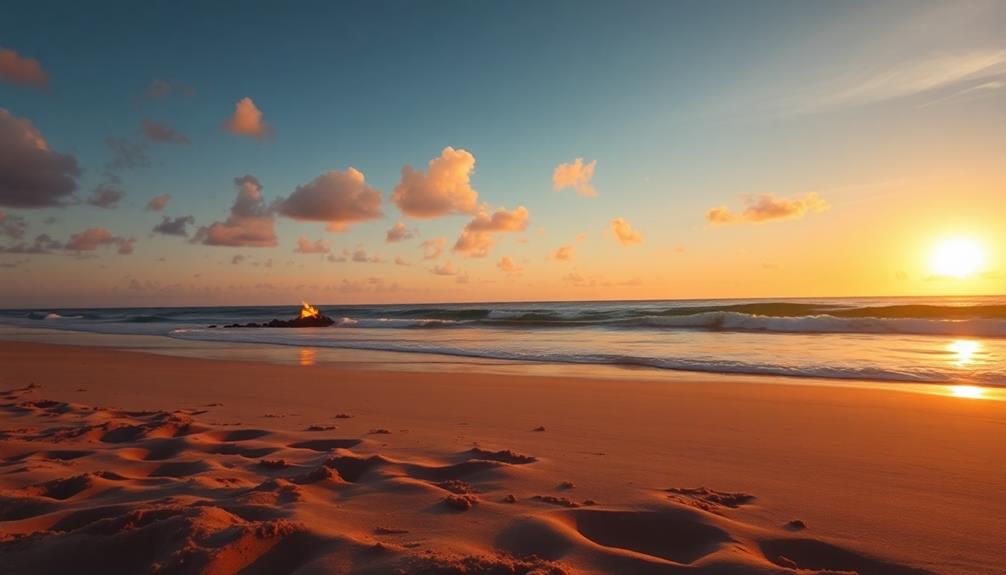
While walking along the beach, you can't help but feel a rush of emotions tied to the scents wafting through the air. The smell of tanning oil reminds teenagers of carefree summer nights spent with friends, laughing and sharing stories while the sun sets.
For many, these scents bring back joyful memories of childhood, with images of sandcastles, salty hair, and ice cream cones melting in the sun.
In places like Italy, kids associate the scent of the sea with delicious summer treats, while fishermen connect it to the engine mixtures in their boats, highlighting how deeply culture intertwines with these smells.
Grandparents often reminisce about the smell of sunscreen and body oil on their grandchildren's skin, creating a bond that passes through generations.
Regional variations also play a role in how we perceive beach scents. For instance, some local cuisines use seaweed, connecting the ocean's aroma to cultural identity.
Each scent carries a story, evoking feelings of freedom, happiness, and connection to the ones we love. The beach isn't just a place; it's a sensory experience that captures the essence of life and culture.
Health or Safety Considerations
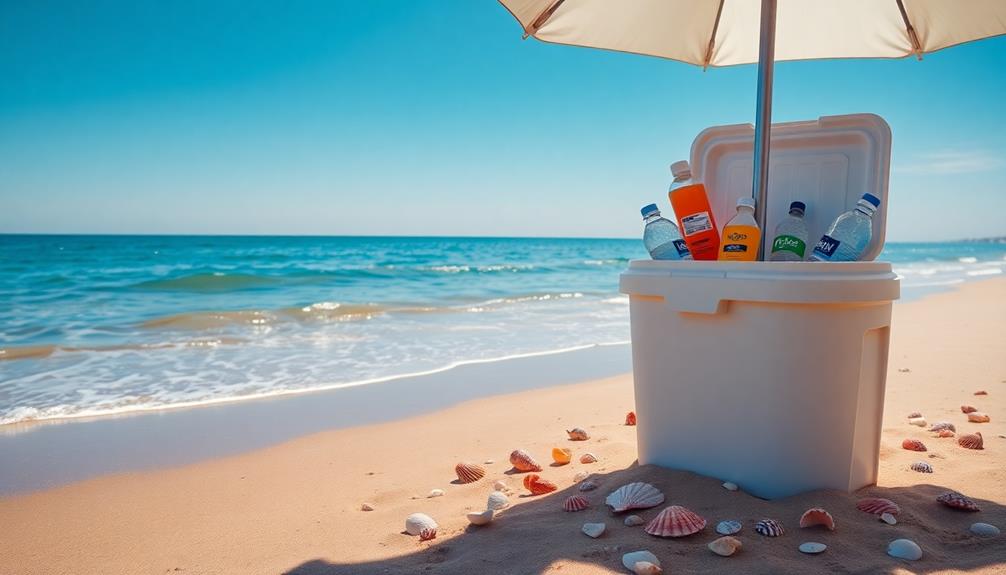
The beach isn't just a place of joy and nostalgia; it also brings health and safety considerations that every beachgoer should keep in mind. One important aspect is the smell of the ocean, which often comes from a compound called dimethyl disulfide. This scent can indicate microbial activity in the water, which might've health implications for swimmers, especially in polluted areas.
Additionally, it's essential to be aware of the potential cybersecurity vulnerabilities that could arise from using public Wi-Fi networks at the beach, as these can expose users to various attacks, particularly when accessing sensitive information like financial accounts or emails. Cybersecurity vulnerabilities exacerbated during outages can heighten these risks.
You should also be aware that high concentrations of certain volatile organic compounds from decomposing marine life can lead to unpleasant odors. These odors might cause respiratory irritations, particularly for those with sensitivities.
If you have allergies, be cautious of fragrances in sunscreens or beach products, as they can trigger reactions.
To protect your skin from harmful UV rays, always apply broad-spectrum sunscreen with an SPF of 30 or higher. Staying hydrated is crucial too! The hot sun and salty air can lead to dehydration, so drink plenty of water.
Keep an eye out for signs of heat exhaustion, like dizziness or excessive sweating. By staying informed and prepared, you can enjoy the beach safely and fully!
Final Thoughts
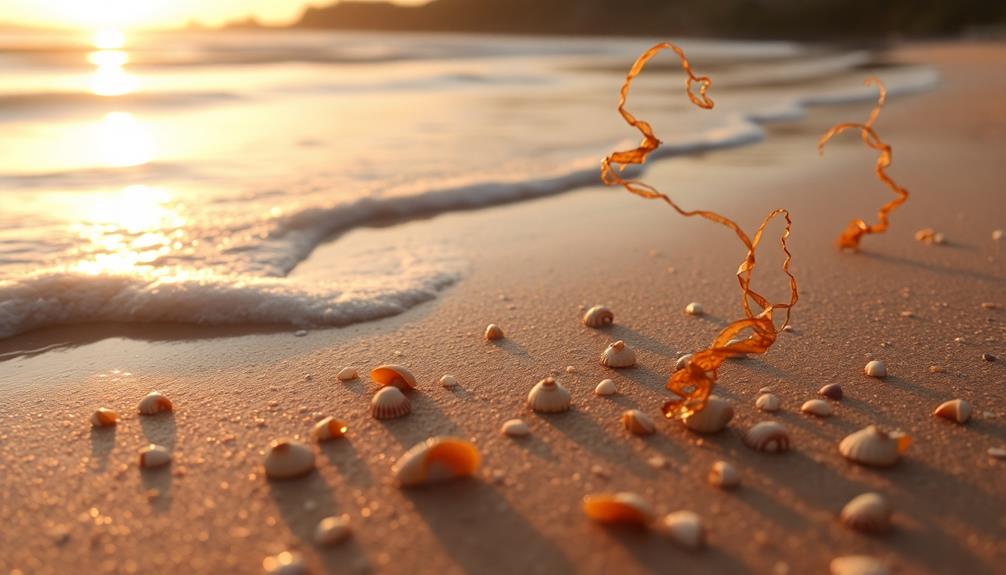
As you reflect on your beach experiences, it's clear that the unique scents and sensations of the ocean leave a lasting impression.
The beach's smell is a blend of iodine, salt, and seaweed, changed by the environment around you. When the tide goes out, you might notice the distinct odors from seaweed and mucky sand, which can remind you of fun beach days.
Dimethyl sulfide (DMS) and dimethyl trisulfide play a big role in that salty, pungent aroma. These compounds come from marine activities and help create the unforgettable scent of the ocean.
Each beach you visit might bring different fragrances, whether briny or fresh, reminding you of special moments.
While some companies try to bottle this unique aroma with fragrances like Demeter's Salt Air and Bulgari Aqua, nothing truly captures the real ocean smell.
Your personal experiences shape how you perceive these scents, making each visit to the beach special.
Frequently Asked Questions
How Would You Describe the Smell of the Beach?
When you think about the beach smell, you can sense salty air mixed with hints of seaweed and iodine. You might even catch a whiff of dimethyl sulfide, bringing back fond memories of summer.
What Smell Is at the Beach?
At the beach, you'll notice a unique mix of salty air, hints of seaweed, and a fresh, invigorating scent. It's a blend that awakens memories and invites you to relax and enjoy the moment.
What Does the Air Smell Like at the Beach?
When you're at the beach, the air's filled with a mix of salty sea, fresh seaweed, and sometimes a hint of brine. Each location has its own unique scent, influenced by local marine life.
What Can People Smell at the Beach?
At the beach, you can smell the salty ocean air mixed with seaweed's green notes and a hint of fishiness. As the tide goes out, earthy scents from sand and shellfish emerge, creating a unique experience.
